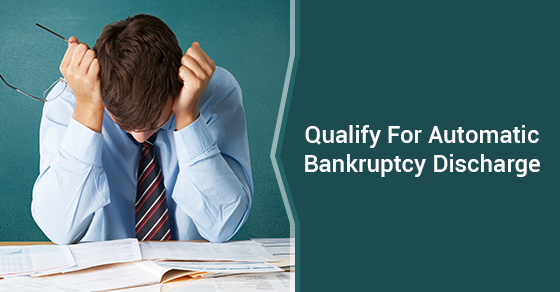Discharging your debts is a major achievement – and typically the final step of the bankruptcy process. However, there are some instances when the bankruptcy continues after a failed discharge, requiring the continued participation of the court, the creditors, and your licensed insolvency trustee.
What is a bankruptcy discharge?
When you are granted a discharge from bankruptcy, it means that you have received an order from the court which:
- Releases you (the debtor) from liability for some or all of the debt. You won’t be legally required to pay any of the discharged debts.
- Prohibits creditors from making attempts to collect the discharged debts through phone calls, demand letters, lawsuits, or any other means.
Automatic bankruptcy discharge
Upon filing for personal or business bankruptcy, the court grants you an automatic “stay,” stopping creditors from trying to collect what you owe them. However, the debts will not be eliminated until they are discharged by the court.
Individuals undergoing bankruptcy are automatically discharged by their trustee 9 months from the time of filing for bankruptcy, without the requirement for any sort of court application. However, there are a few conditions that must be met, including:
- You must be a first-time bankruptcy applicant
- Your creditors, trustee, and the Office of the Superintendent of Bankruptcy (OSB) have to approve the discharge
- You must have sought professional financial help through credit counselling, for example
- You must have an income debt of less than $200,000, and it must constitute of less than 75% of your total debt
- You have no obligation to pay a fraction of your surplus income to the bankruptcy estate – but if your surplus limit is too low compared to your income, and you are required to make these payments, you have to wait 21 months to qualify for the discharge (you pay the trustee for those 21 months)
Note that if you are applying for a bankruptcy for the second time, you will have to wait 24 months to be eligible for an automatic discharge, and 36 months if you have a high surplus income and are contributing a fraction of the surplus to the trustee (for those 36 months). Payments must be completed in full within the agreed time limit.
Your bankruptcy trustee will inform your creditors and the OSB about the pending date of your discharge. In most cases, they do not object to the discharge, in which case the trustee will send you a copy of the discharge – without any requirement for a court hearing.
What if you don’t qualify for discharge?
You may not be eligible for discharge if:
- You fail to adhere to the requirements: Providing your trustee with evidence of your monthly earnings, attending counselling sessions, making the agreed payments for those with surplus income, or refusal to avail your tax documents.
- Creditors believe that the court will order you to repay a portion of the money you owe (conditional discharge): Causing them to oppose the discharge in favour of going to court
- The OSB believes that you are abusing the bankruptcy process: For a second or third bankruptcy
Your licensed insolvency trustee will apply for the discharge hearing on your behalf, provide the court with details of your bankruptcy, and alert the OSB and creditors of your application for discharge.

